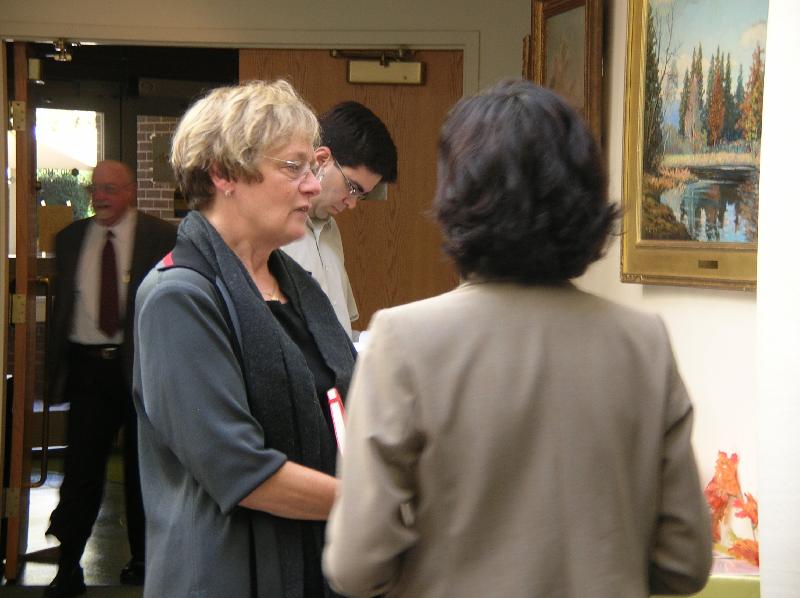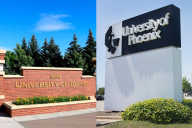You have /5 articles left.
Sign up for a free account or log in.
Georgia higher education officials are pushing to merge Kennesaw State University and Southern Polytechnic State University – and students at Southern Poly are pushing back.
The merger, the fifth public college consolidation in Georgia since 2012, was announced Friday, to the surprise of many on both campuses.
The University System of Georgia has already merged eight institutions in an effort to, among other things, save money. So far, countless hours have been spent on the mergers and historic institutions’ names have been wiped off the map. And, so far, the 31-campus system has saved only about 0.1 percent -- an estimated $7.5 million -- of its $7.4 billion operating budget.
Now, Southern Poly students and alumni accuse the Georgia system’s 19-member Board of Regents of “deceit and bottom line economics” that could ruin their institution, which specializes in engineering, technology and architecture. The combined institution will be called Kennesaw State University.
Southern Poly students and alumni who are critical of the plan cite the timing of the merger announcement, which portrayed the consolidation as a done deal even before the board votes next week on the merger plan. It is not unusual for the Georgia chancellor, board and system staff to keep university-level officials in the dark about the fate of their institutions until nearly the last minute, said several people involved in the merger process.
The presidents of Kennesaw and Southern Poly, for instance, both said they did not know about the merger until a week and a half before the public announcement. Nor do they know who Chancellor Hank Huckaby and regents met with ahead of announcing the fait accompli. The news release from the system office said, “Kennesaw State and Southern Polytechnic Will Consolidate” even though the board has yet to vote.
“I have no idea who else the Board of Regents talked to, but I’m sure they talked to many, many other people prior to consolidation,” Kennesaw President Dan Papp told scores of concerned students during a forum at the Southern Poly campus this week.
“But not us,” said Southern Poly President Lisa Rossbacher, who was seated next to Papp on the stage.
After the forum, Southern Poly students rallied for several hours in opposition to the merger, said Amber Lawson, a student who expects to graduate from the university in December. Lawson, who wrote a letter to the board to protest the decision, said the regents' actions have been “backhanded.”
“It feels like it’s something that is being crammed down our throats, ‘This is something we’re going to do,’ ” she said. “Even if you just give us the illusion we have a voice, that would be better than a big ‘Eff you.’ It was really a shocker.”
The regents do allow public comment during their meetings – if someone asks to speak 15 days in advance. The Kennesaw/Southern Poly consolidation was announced 11 days before the board’s next meeting, which begins Nov. 12.
“Clearly, we will not have an opportunity to speak in that meeting and have our voices heard,” Lawson said in a telephone interview.
So, she said, Southern Poly students plan to protest outside the board offices next week in Atlanta, which is about a half-hour from the Southern Poly campus in Marietta.
The Georgia system's associate vice chancellor, Shelley Nickel, who is known as the “consolidation czar,” acknowledged that the decision to merge Kennesaw and Southern Poly was made following private discussions among Huckaby, board members, and system staff.
But she said the timing of the announcement was not designed to block student input.
“There is nothing intentional about the shutting out of the students,” she said in an interview.
A spokesman for the regents said board members would not be made available for comment.
Nickel said the Kennesaw/Southern Poly merger made sense for a few reasons. The two institutions are in the same county, 10 miles apart, and have different missions but also some overlap, she said.
But because the chancellor and the board talked to few if any of the leaders at Kennesaw or Southern Poly, it is unclear if they have gathered the sort of qualitative data that would allow them to sort out what programs are truly overlapping. For instance, Nickel said part of the overlap included liberal arts programs at Southern Poly. But the English program at Southern Poly is focused on professional communications, including technical writing.
Asked if that specialized program could easily be merged with an English program at Kennesaw that isn’t as specialized, Nickel said, “Those are the kind of questions that the faculty will make determinations about once we start the implementation.”
The Consolidation Chancellor
Mergers have been a key goal of Huckaby’s since he became chancellor in 2011.
The Georgia system makes its decision to merge based on a combination of qualitative and quantitative factors, which the board has publicly boiled down to a half dozen “principles for consolidation.”
In the long run, Nickel said students at Southern Poly would be better off after the merger – even if they don’t think so now.
“The goal is really to serve students, we really take that seriously,” she said. “And while the students, some of them, are unhappy about the process, the end result, I believe, will serve them better than the institutions are currently doing and that’s the goal of the board and the chancellor.”
Students and alumni are not so sure. Five thousand people have signed a petition opposing the merger and students and alumni are vigorously taking to Twitter and Facebook to denounce the regents.
Presidents of two of the newly consolidated colleges in Georgia – Middle Georgia State College and University of North Georgia – said mergers of their institutions were challenging but going well, all things considered. Several officials at the other two -- Georgia Regents University and South Georgia State College – could not be reached to comment or did not respond.
Middle Georgia -- the combination of Macon State College and Middle Georgia College, which together had five campuses that all remain open after the merger -- was able to save $2 million in administrative costs because of the merger.
“That’s been huge for this school,” said President John Black. That said, the savings is a one-time windfall for the institution, which he said has an operating budget of about $100 million.
Georgia system officials said saving money is not the sole goal of the mergers. And, relatively speaking, the mergers have yet to save very much.
The system expects the first round of mergers will save between $5 million and $7.5 million this year, Nickel said. That’s about 0.1 percent of the total $7.4 billion operating budget for the 31-college system. About $1.9 billion of the budget comes from state appropriations, said a system spokesman.
Georgia’s mergers have also been mostly back-office, too. It has not closed campuses. And employee firings have been minimal: Only about eight employees were laid off as a result of the previous four mergers, although other employees were reassigned or positions eliminated through attrition, according to a spokesman.
Georgia officials have been able to undertake the mergers without the sort of show-stopping fuss other higher ed systems have encountered. The State University of New York, for instance, has so far largely failed to consolidate even leadership posts in its 64-campus system.
Part of that may be because the mergers – including the first round, which was announced nearly two years ago – all came about behind the scenes.
“Our merger went, I think, as well as it could, given the circumstances,” said Black, who took over after the Middle Georgia merger was announced. “Nobody asked to be consolidated and it was a little bit of a surprise.”
In Georgia, the mergers involve taking two institutions and creating a new, larger third institution.
The institution that is now the University of North Georgia – the combination of Gainesville State College and North Georgia College and State University – also came out of a surprise announcement.
Mark Spraker, chairman of the Faculty Senate at the new North Georgia, said he was at a local Chamber of Commerce event with the president of the old North Georgia when she received a call telling her about the merger.
To make things work after that, 65 groups were established to sort out the merger, said President Bonita Jacobs, who was head of both the old and new North Georgia.
Jacobs and Spraker said in interviews that the merger went as smoothly as possible.
“The most important reason we have been successful is we weren’t one institution trying to fix the other,” Jacobs said.
At Kennesaw and Southern Poly, there is now a long road ahead until the merged institution begins admitting students in fall 2015.
Kennesaw President Papp, who was previously president of Southern Poly in the late-1990s, said he expects the merger will produce “moderately significant” savings, even though officials plan to keep open both the Kennesaw and Southern Poly campuses.
Particular uncertainty surrounds jobs and the tenure and promotion system, according to several people at Southern Poly and Kennesaw.
One thing that proved contentious during the previous four mergers may not be a problem now, though: Nickel said the Georgia system decided it would call the combined institution Kennesaw State.
She said system officials learned it is very difficult for campus officials to settle on a new name. This time around, they thought it would be easier if the system office chose the name at the outset, Nickel said. Southern Poly students have said the “Polytechnic” name is key for them as they hunt for jobs, but Nickel said “Kennesaw” won out because Kennesaw has “a national brand name.”
That is unlikely to settle things, though.
During the campus forum this week, Southern Poly President Rossbacher told students the merger “doesn’t stop any of you from wearing green,” a school color. Then Rossbacher pointed to herself to indicate she would not stop wearing green either.




